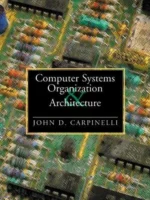Computer Networking: A Top-Down Approach Review
Computer Networking: A Top-Down Approach by James F. Kurose and Keith W. Ross teaches networks from the application layer down. You start with the web and streaming, then descend through transport, network, link, and physical concepts. It’s pragmatic, example-rich, and aligns with how developers actually meet the internet.
Overview
Topics: HTTP/HTTPS, DNS, CDN and caching; transport (UDP, TCP congestion/flow control); network layer (IP, routing, ICMP); link/MAC (Ethernet, Wi-Fi); multimedia, security (TLS, PKI, certificates), SDN, and data center networking.
Summary
The book frames protocols as layered contracts and performance problems. Labs and socket programming tasks anchor ideas like RTT, throughput, loss, and fairness. Later chapters cover content delivery, QoS, and security trade-offs.
Authors
Kurose and Ross write cleanly with strong problem sets and Wireshark-style exercises.
Key Themes
Layering and abstraction; performance as design driver; congestion vs reliability; security as cross-cutting concern.
Strengths and Weaknesses
Strengths: clear organization, practical labs, current protocol focus. Weaknesses: limited deep dive into carrier-grade ops and evolving QUIC/HTTP/3 details in older editions.
Target Audience
CS students, software engineers, SREs needing a principled, application-first networking foundation.
Favorite Ideas
Top-down labs that expose real headers; congestion control intuition; CDN logic for latency and scale.
Takeaways
Think in layers and contracts. Measure RTT/throughput, respect congestion control, and design apps that cooperate with the network.









